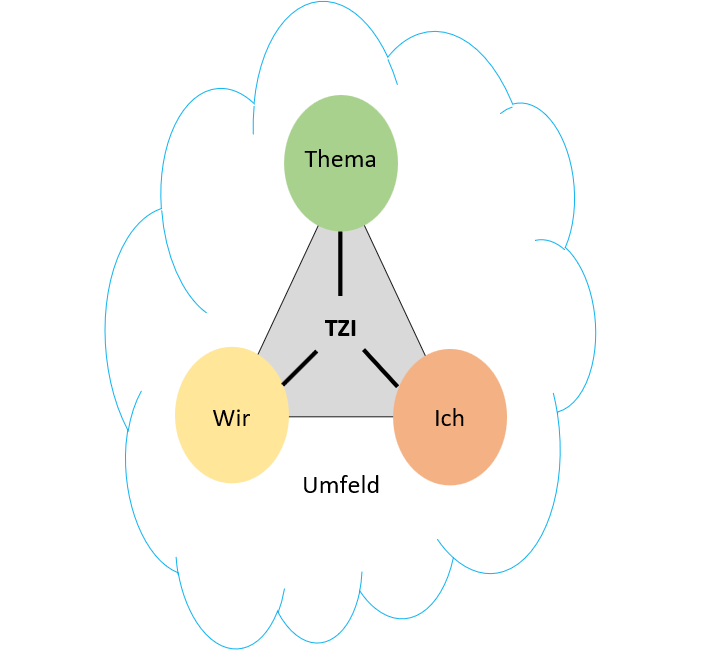Theme-Centered Interaction (TCI) – The Four Factor Model
The topic-centered interaction is a model that shows how a seminar group can be controlled.

The focus is on "social learning" while at the same time giving each individual participant the opportunity to develop themselves further.
The model specifies two basic requirements that must be met so that each individual participant can develop further:
- An appreciative atmosphere
- Disturbances have priority
If the two basic requirements are met, the topic-centric interaction is about balancing four components in order to advance individual learning and group learning, so that all participants finally reach the set goal (topic).
Key Question
What does the learning process need to achieve the goal of the event or to make progress on the way there? What does the learning process need to take the next step now?

Theme
The topic is the (learning) content, the task, the goal that the group is working on.
If the seminar leader is mostly on the topic, the we factor and the I factor tend to be ignored / put aside. This can be useful for lectures or in a seminar context if time problems arise. In the case of introductions (to content), it can also make sense to put the topic in the foreground.
Me
The I-factor focuses on each individual participant with their individual needs, desires, dreams and personality patterns. Every participant has to be given his space from time to time, even though it is a group work.
The trainer claims the largest I part in a seminar for himself. This happens for the first time at the start of the seminar. During the round of introductions, the I factor is given to each individual participant.
In general, when one participant receives the ego, the group does not move forward. Therefore, the I part of the participants should be limited.
We
With the we-factor, the focus is on the group with its dynamics, solidarity, cohesion (internal cohesion) and collaborative work. The aim is to achieve an openness and tolerance towards mistakes that is permitted in the seminar context and is conducive to development.
Surroundings
The environment is external circumstances, framework conditions and rules. In the immediate vicinity, for example, there are the circumstances of the seminar location (e.g. working materials available/not available). Further out in the environment there are, for example, operational specifications, laws, morals, etc. In this model, the environment is accepted as given and cannot be changed.
Examples
